"Sight radius" refers to the distance between the front and rear irons of a gun. Today I will be demonstrating how increased sight radius results in better accuracy of fire. Imagine a large circle drawn with its center at the rear sight, and one of its edges in line with the front sight. The distance between the two is the radius of that circle, which is where the term “sight radius” comes from. As you rotate your gun at the wrist, the front sight pivots along the edge of the circle relative to your rear sight. For today’s example, we will be comparing the sight radius of three guns:
The Ruger and Glock were selected to show the difference in sight radius between an extremely small subcompact handgun, and a more common compact handgun. The m16 was selected due to most people’s familiarity with it, but primarily because of its large sight radius. This will better visually display the drastic difference that sight radius makes.
First, let’s take a look at the sight radius and the sight picture for all three guns. “Sight Picture” refers to what the user sees when aiming down the iron sights. The orange dot at the center of the bullseye (may not be visible on pistol irons) is our point of aim (what we’re trying to hit).
All demonstrations of sight picture are approximations, I don’t have a fancy camera setup, a range, and the guns to take Actual Real Photos of this stuff.
The LCR has a sight radius of 3.3”. This is what its sight picture looks like when correctly aligned.
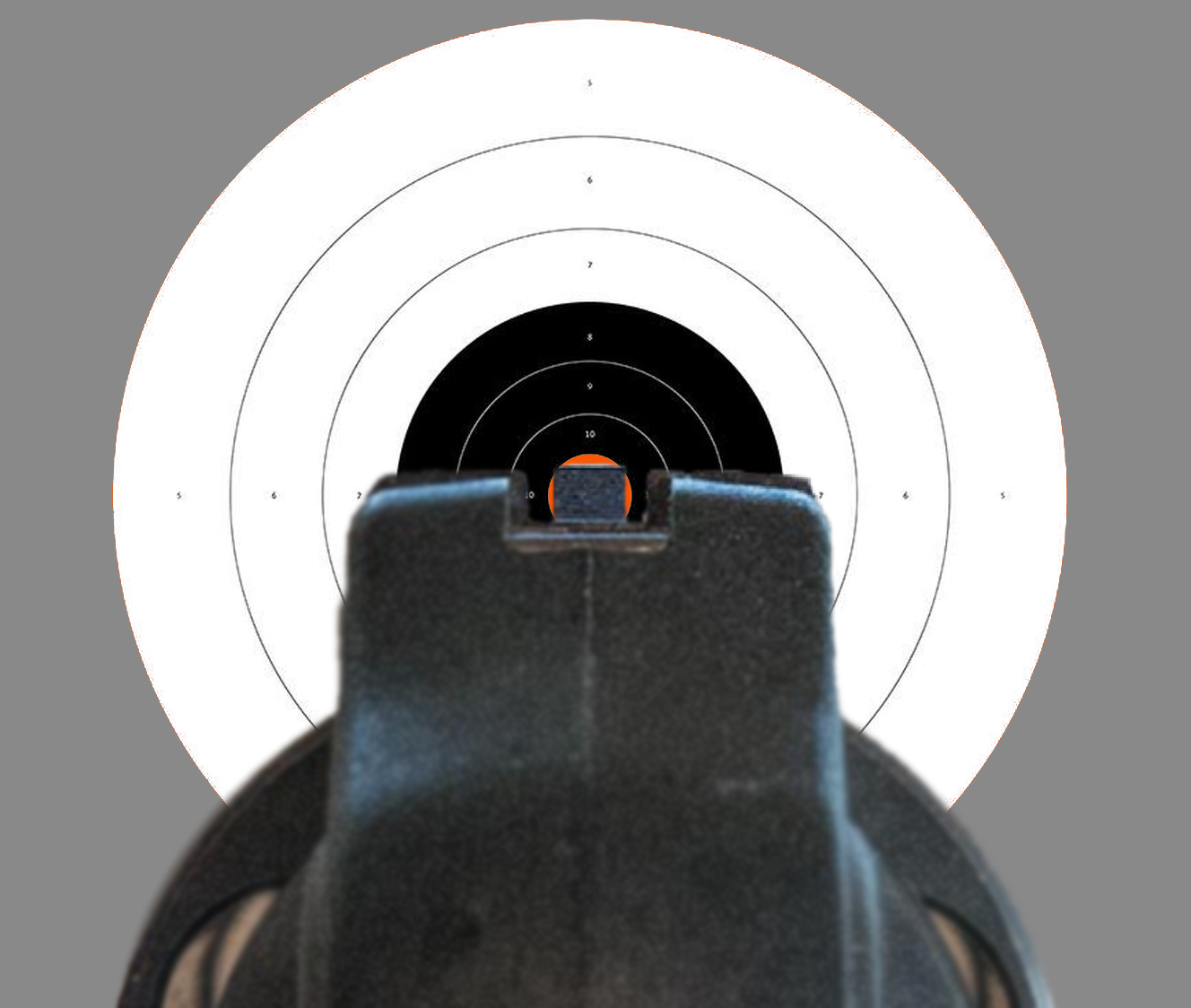
The Glock has a sight radius of 6.1”. This is what its sight picture looks like when correctly aligned.
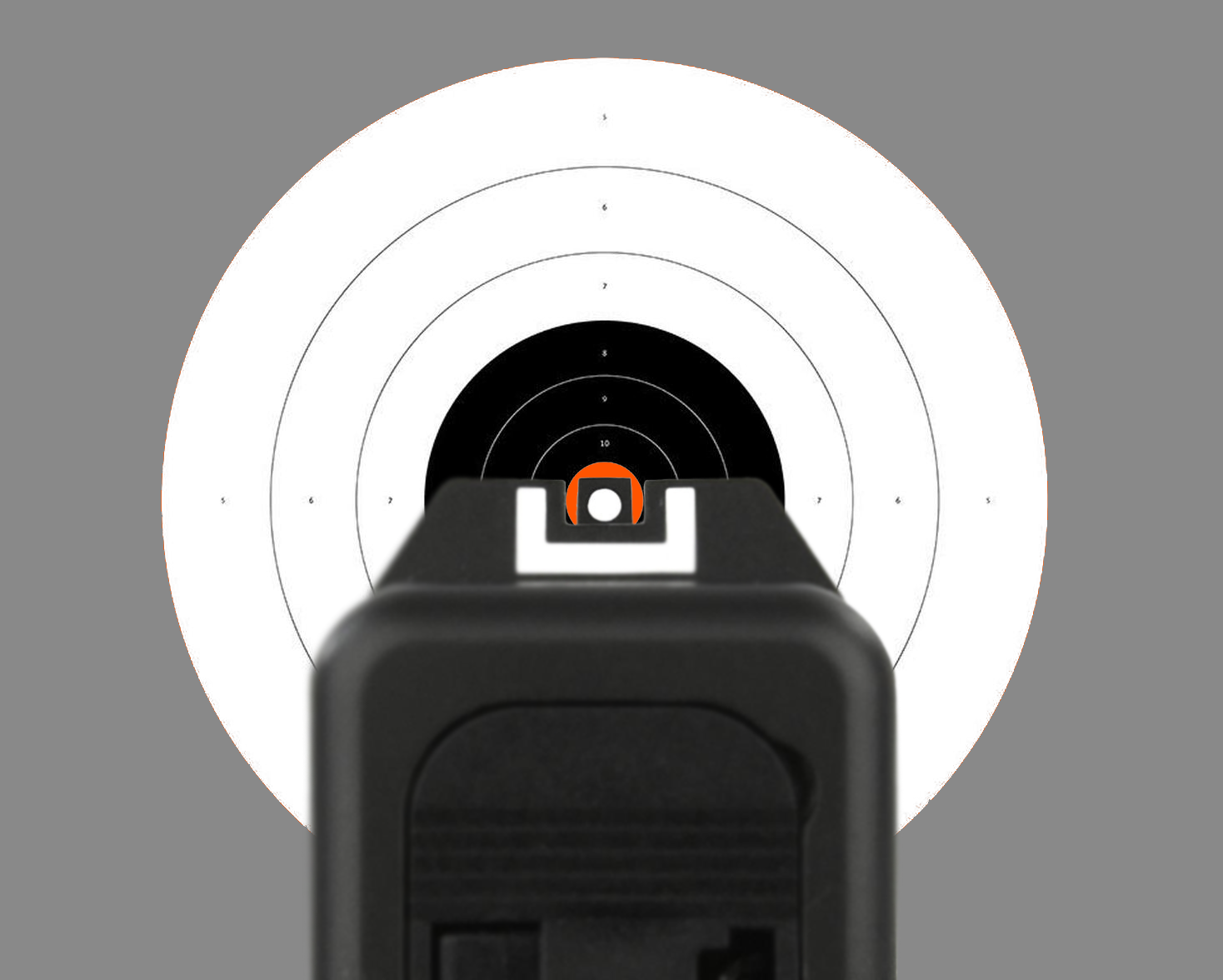
The M16 has a sight radius of 19.8”. This is what its sight picture looks like when correctly aligned.
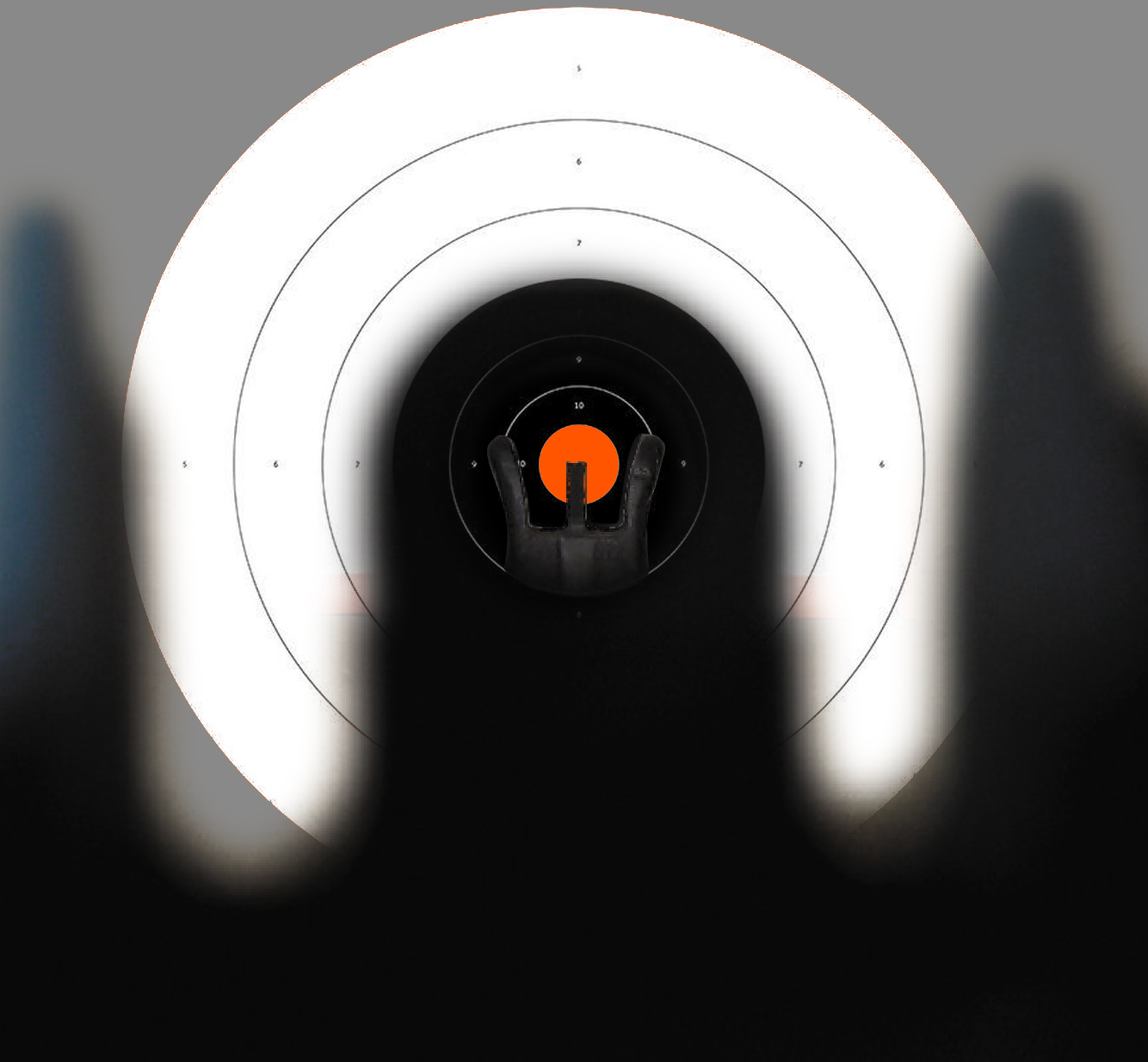
Now, we will rotate each gun 3 degrees downwards. This rotation will be occurring at the wrist, your primary point of control over your weapon. Because the rear sight is essentially in line with your wrist, we will estimate our measurements and sight pictures as if the rear sight is fixed in place, and the front sight rotates downwards.
Each gun is rotated the same amount about the axis of the rear sight. This means (because we are simplifying for the sake of explanation) a bullet leaving any of the three guns will be travelling on the same trajectory, impacting the target at the same point. Which in this case, will be 9.4” below the bullseye.
The primary difference between all three guns, will be how the drop of the front sight presents in the sight picture, based on the sight radius of the gun.
With a 3-degree rotation, the LCR’s front sight drops 0.17”. This results in a sight picture that looks something like this. The front sight post has barely moved, it is very hard to tell that the gun is not aligned properly.
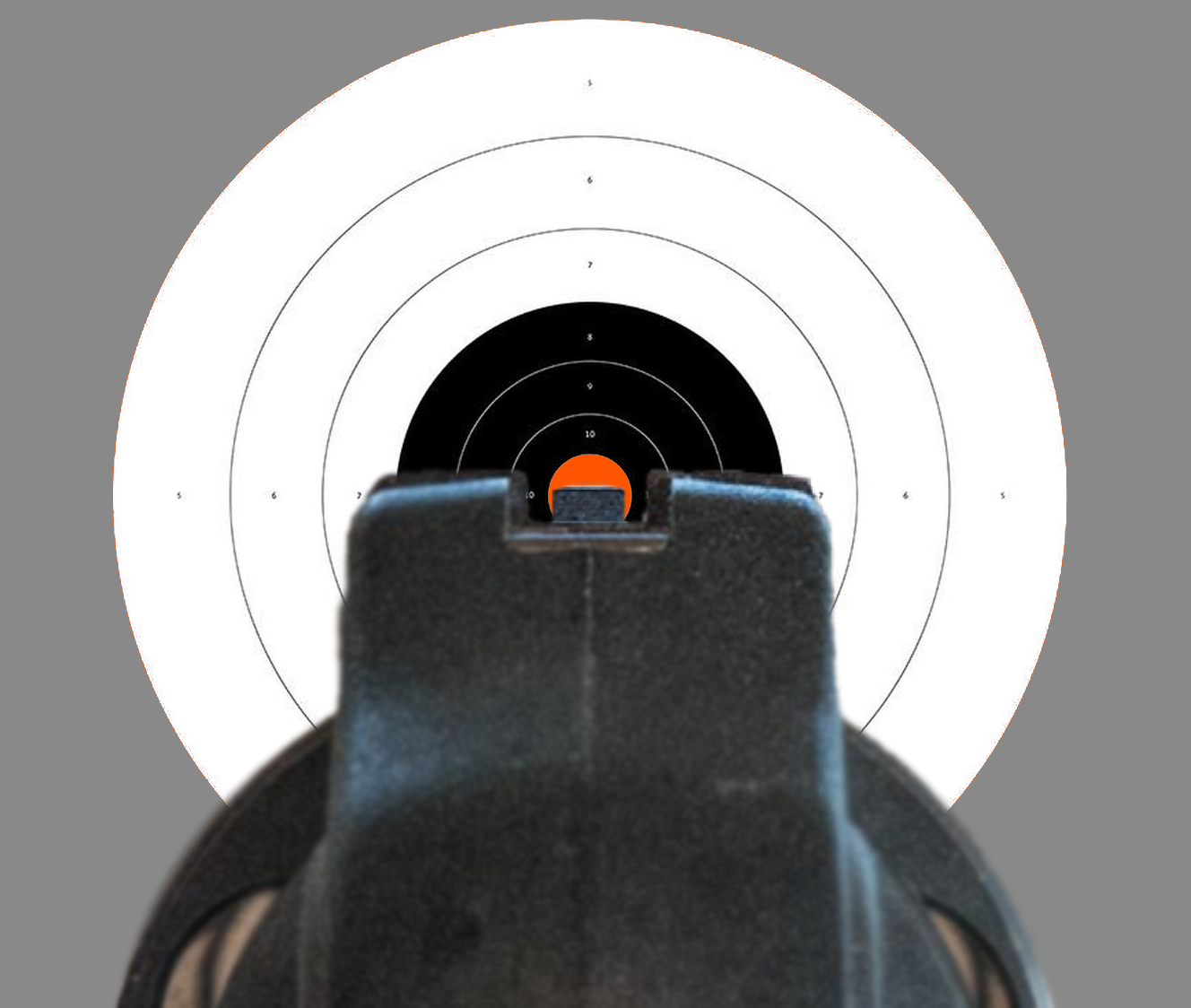
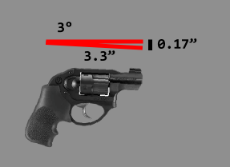
With a 3-degree rotation, the Glock 19’s front sight drops 0.31”. This results in a sight picture that looks something like this. This drop is visually more noticeable than the drop of the LCR.
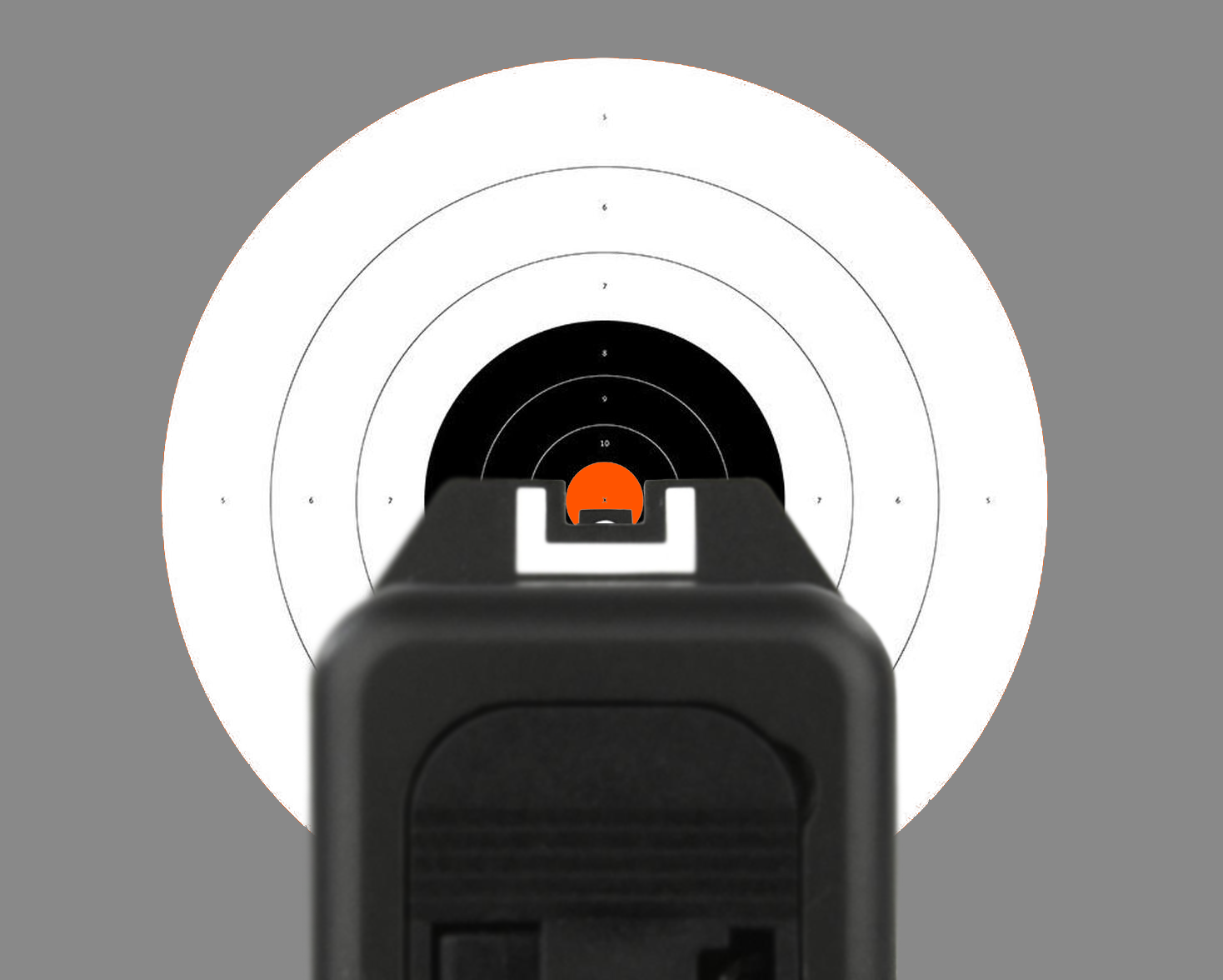
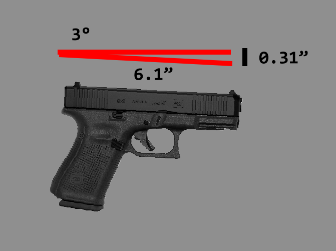
With a 3-degree rotation, the M16’s front sight drops 1.03”. This results in a sight picture that looks something like this. This drop is substantially more noticeable than both of the pistols. You cannot see the front sight block with this level of drop.
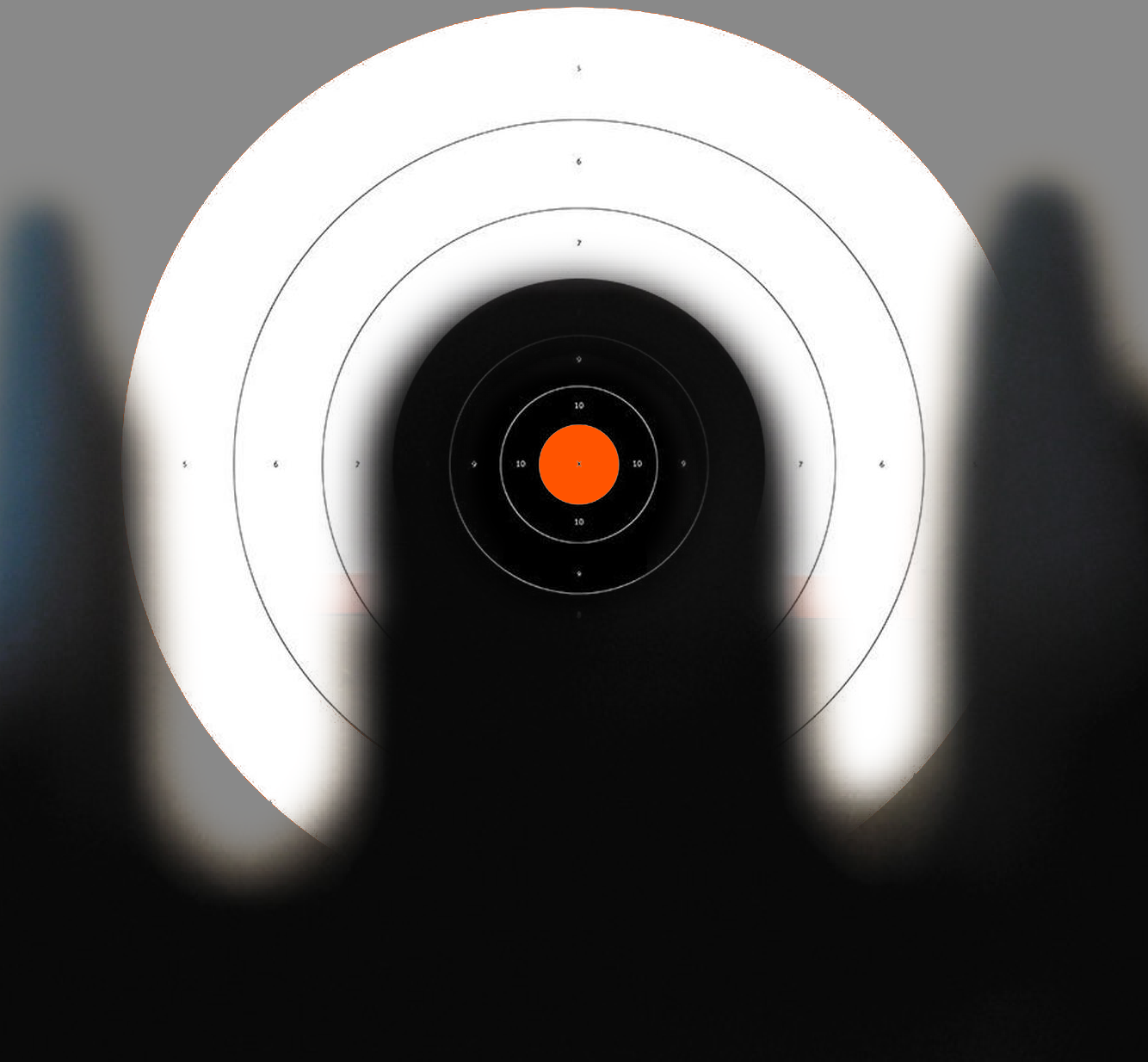

Essentially, when you misalign your aim, such as tilting your gun upwards or downwards, or side to side, those misalignments are far more visible with a longer sight radius. As a result, you are able to more accurately determine what a “correct” sight picture looks like, and therefore increase the accuracy of your shooting.